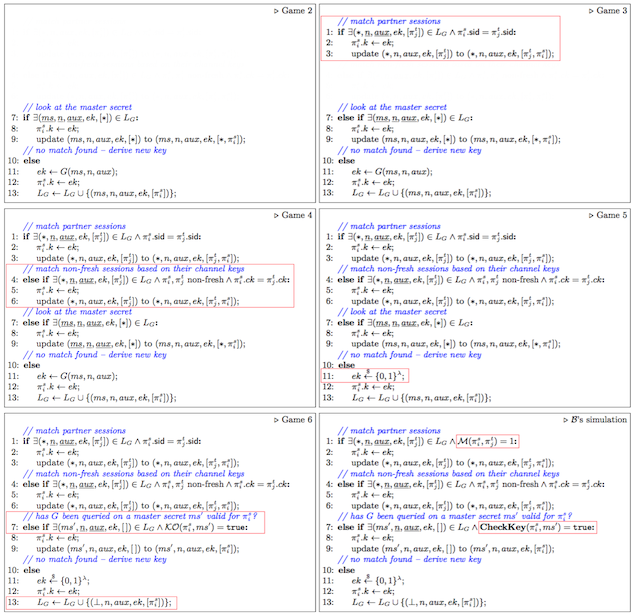
Douglas Stebila
Safely exporting keys from secure channels: On the security of EAP-TLS and TLS Key Exporters
Abstract
We investigate how to safely export additional cryptographic keys from secure channel protocols, modelled with the authenticated and confidential channel establishment (ACCE) security notion. For example, the EAP-TLS protocol uses the Transport Layer Security (TLS) handshake to output an additional shared secret which can be used for purposes outside of TLS, and the RFC 5705 standard specifies a general mechanism for exporting keying material from TLS. We show that, for a class of ACCE protocols we call “TLS-like” protocols, the EAP-TLS transformation can be used to export an additional key, and that the result is a secure AKE protocol in the Bellare–Rogaway model. Interestingly, we are able to carry out the proof without looking at the specifics of the TLS protocol itself (beyond the notion that it is “TLS-like”), but rather are able to use the ACCE property in a semi black-box way. To facilitate our modular proof, we develop a novel technique, notably an encryption-based key checking mechanism that is used by the security reduction. Our results imply that EAP-TLS using secure TLS 1.2 cipher-suites is a secure authenticated key exchange protocol.
Keywords: provable security, authenticated and confidential channel establishment (ACCE), authenticated key exchange (AKE), secure channels, EAP-TLS, key exporters
Reference
Christina Brzuska, Håkon Jacobsen, Douglas Stebila. Safely exporting keys from secure channels: On the security of EAP-TLS and TLS Key Exporters. In Jean-Sebastien Coron, Marc Fischlin, editors, Advances in Cryptology — Proc. EUROCRYPT 2016, LNCS, vol. 9665, pp. 670-698. Springer, May 2016. © Springer.
Download
BibTeX
Funding
This research was supported by:- Australian Research Council (ARC) Discovery Project grant DP130104304
- STSM Grant from COST Action IC1306
